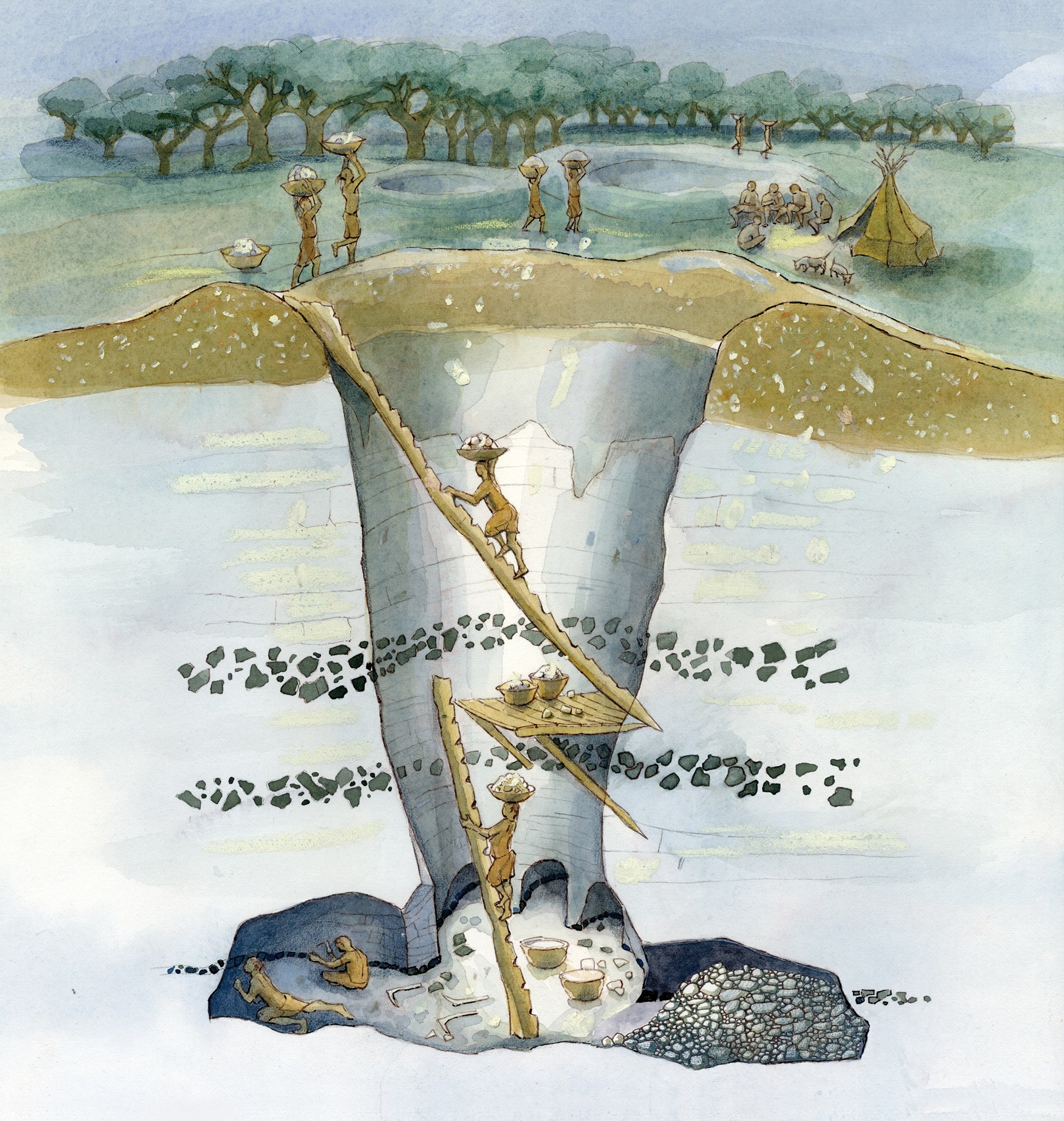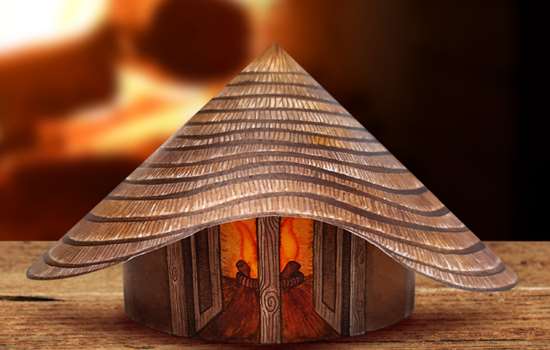Stone Age Q&A with Will Lord
Flo: When did you start learning about the Stone Age?
Will: I was five years old when my family came to look after Grime's Graves and I started learning the skills that were once used here.
Alfie: Where did prehistoric people come from?
Will: Your oldest ancestors came from Africa but our species has been around for 30,000 years!
Flo: What were the miners' houses like?
Will: They probably used the wood and chalk around here to build them, with deer skins as roof tiles!
Alfie: What toys did the children have and did the children go to school?
Will: School hadn't been invented yet. Their toys would have been things like animal traps!
Flo: How did the miners see what they were doing?
Will: The walls would have been bright white because of the chalk. They also made Stone Age lanterns using deer fat and nettle fibre wicks.
Alfie: What's the funniest prehistoric joke you know?
Will: What do prehistoric people like to do in the evening? Go clubbing!
Explore the Neolithic Flint Mine
Going Underground
You might know that British people are famous for mining, whether it's coal, slate or tin.
Even in the Bronze Age we were going underground to find copper and tin to make Bronze, but Grime's Graves in Norfolk goes back even further than that!
Over 4,500 years ago, people were going underground in Norfolk to find flint. They sharpened it to make weapons and tools, and a few sparks from striking flint helped to make a fire pretty quickly too.
A GRASSY, LUNAR LANDSCAPE
The odd, pockmarked ground at Grime's Graves is due to over 400 pits that the miners dug to get the flint.
Each pit was dug 13 metres down to where the flint was buried, and the miners used tree trunks or wooden ladders to get in and out of them. The shape of deers' antlers made them ideal tools for scooping out the flint.
Image: Reconstruction of what Grime's Graves would have looked like during the Neolithic period
Fantastic Flint
Mining carried on at Grime's Graves for over 400 years until the need for flint was replaced by bronze. But people still lived and worked around the area for the rest of the prehistoric period.
They used the holes dug in the earth to dump rubbish, bury people and even live in. The mines got their cool name centuries later from the Anglo-Saxons.
THE GOD GRIM
They thought the odd ground was created by their god Grim, and so called it Grim's Graves, which later became Grime's.
Living in the Stone Age, the miners had no books or TV to distract them, so they had lots of time to become master flint knappers!
Image: Reconstruction showing what the mines would have looked like inside and how the miners accessed them
Visit Grime's Graves
You can learn more and explore the grassy, lunar landscape yourself at Grime's Graves - it's the only Neolithic flint mine open to visitors in Britain.
Whilst you're there you can even go down nine metres by ladder into one excavated shaft to see the jet-black flint!
*Please note that children under 10 years of age are not allowed into the mine shaft and visitors should be advised to wear sensible flat shoes.
Plan your visit



